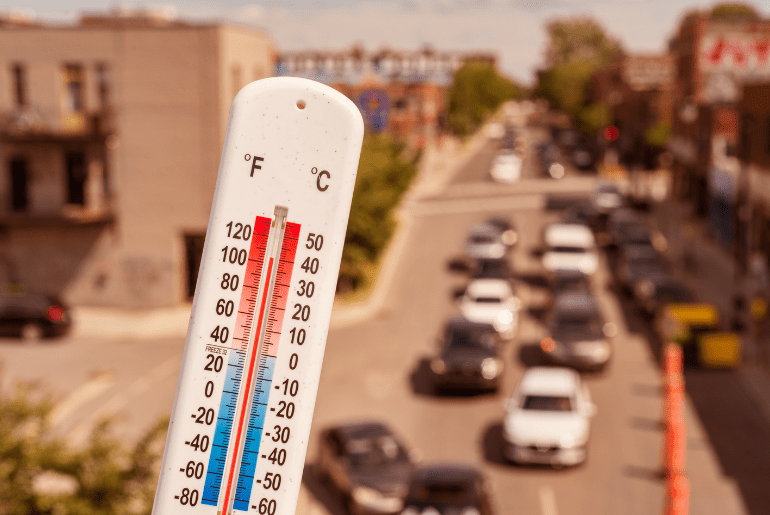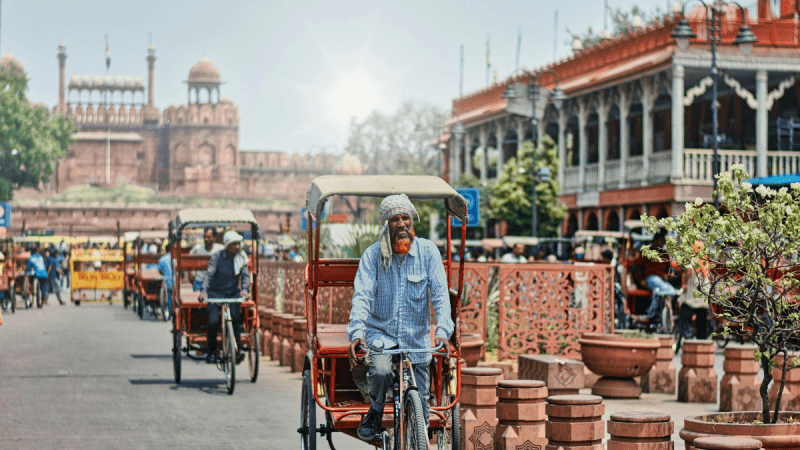Delhi is battling a fierce heatwave this summer. Although the mercury shows 40°C, it feels closer to 50°C for residents. This extreme discomfort stems from a mix of high humidity, the infamous ‘loo’ winds, and the city’s growing urban infrastructure. These elements have created a dangerous situation, prompting health warnings and calls for precaution.
Understanding The ‘Feels-Like’ Temperature

The ‘feels-like’ temperature, also known as the apparent temperature, indicates how hot it feels on the skin. It takes into account factors such as humidity, wind speed, and exposure to the sun. When humidity rises, sweat evaporates slowly, making it harder for the body to cool down naturally.
According to a report by The Times of India, high humidity in Delhi has increased the body’s heat load, causing the temperature to feel significantly hotter. When combined with poor ventilation in built-up areas, this creates an unbearable outdoor experience.
The Role Of The ‘Loo’ And Urban Heat Island Effect
Another reason for Delhi’s intense heat is the presence of the ‘loo’—a hot, dry wind that blows from the Thar Desert during summer months. These winds drastically raise daytime temperatures and dehydrate the air. As reported by The Times of India, this phenomenon further adds to the heat stress on the human body.
Also Read: Weather Update: 42°C Forecast For Delhi-NCR, IMD Warns of Heatwave In UP, Haryana, Other States
In addition, Delhi suffers from what experts call the urban heat island effect. Large stretches of concrete and asphalt absorb heat during the day and release it slowly at night, keeping the temperature high even after sunset. Residential and commercial areas with limited greenery amplify this effect, making the environment warmer than surrounding rural zones.
What Authorities Are Doing To Help
To combat this crisis, the Delhi government has launched measures like the Jal Doot scheme. As per the Times of India, this initiative provides clean and chilled drinking water at selected bus shelters across the city. It aims to prevent dehydration and reduce the risk of heatstroke, especially for daily commuters.
Also Read: Delhi Heatwave: 11-Yr Old Climate Activist Pleads CM To Shut Down Schools Revive Aravalli
Municipal authorities are also monitoring the water supply and urging people to remain indoors during peak hours. By keeping citizens informed and hydrated, officials hope to minimise heat-related illnesses.
How To Stay Safe In This Extreme Delhi Summer
Residents must take proactive steps to manage the heat. Staying hydrated is essential—regular intake of water, coconut water, or electrolyte drinks can help. Wearing loose, light-coloured clothing made from breathable fabrics such as cotton can prevent overheating.
Experts also recommend avoiding outdoor activity between 10 a.m. and 4 p.m. People should use fans, coolers, or air conditioning whenever possible and ensure proper ventilation indoors.
Applying sunscreen, using hats or umbrellas, and keeping pets indoors are also practical steps during this period.
Also Read: Delhi Heat Getting To You? 7 Hill Stations Near Delhi That Are Under 9 Hours
Delhi’s current heatwave is not just about rising temperatures—it is the result of a complex mix of weather conditions and urban design. While authorities take measures to provide relief, individual efforts also play a crucial role in staying safe during this scorching summer.
Cover Image Courtesy: Canva Pro
For more such snackable content, interesting discoveries and the latest updates on food, travel and experiences in your city, download the Curly Tales App. Download HERE.
First Published: May 21, 2025 7:45 PM




